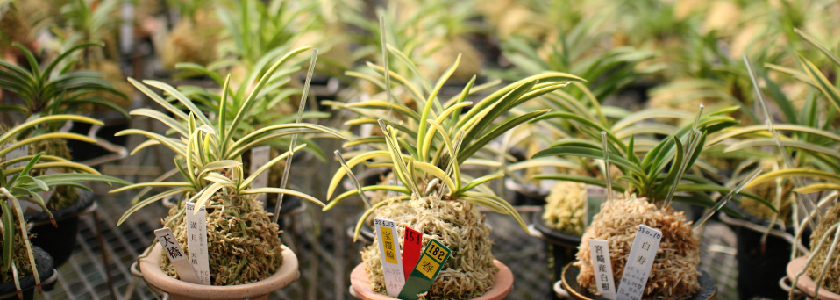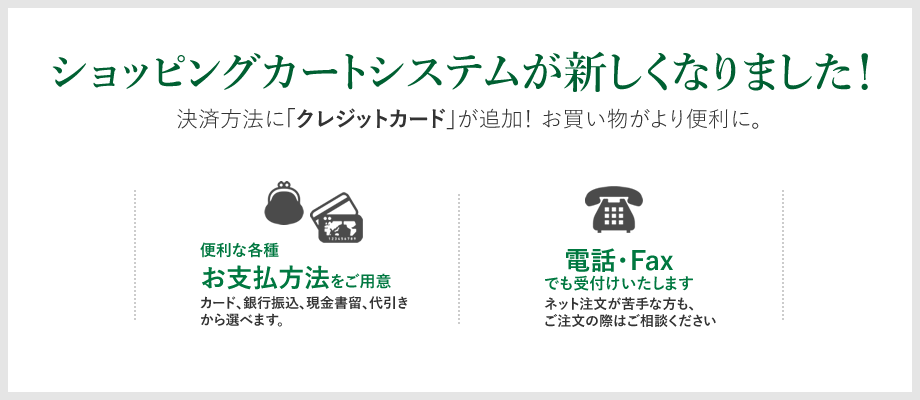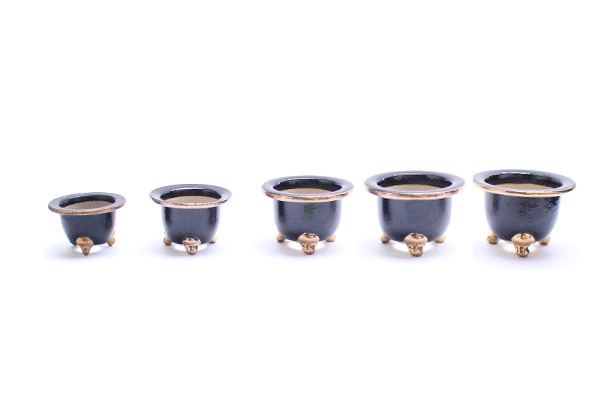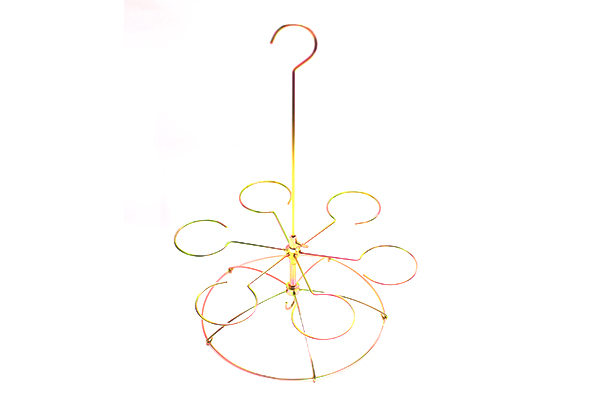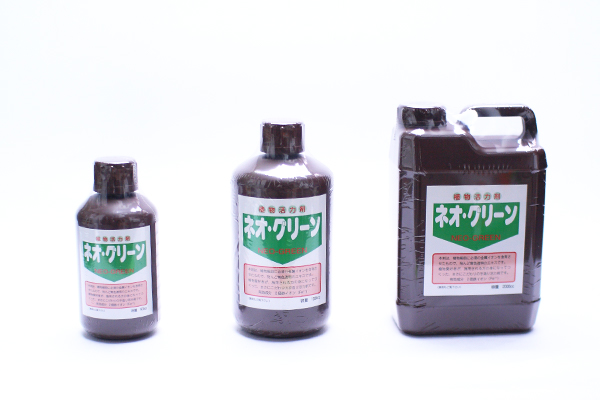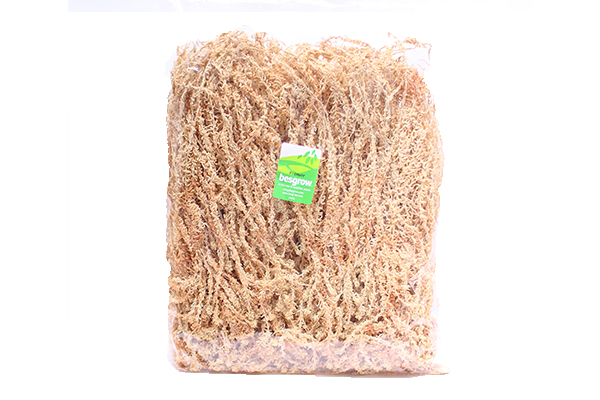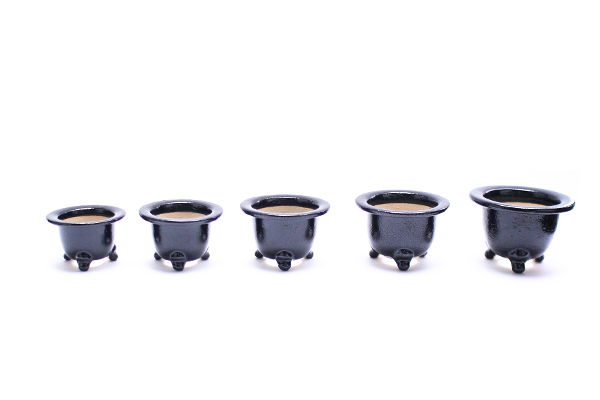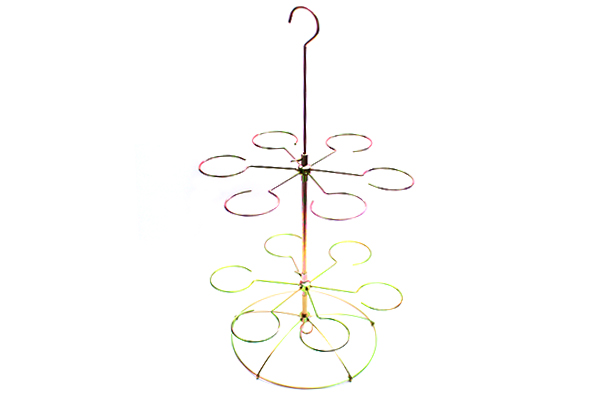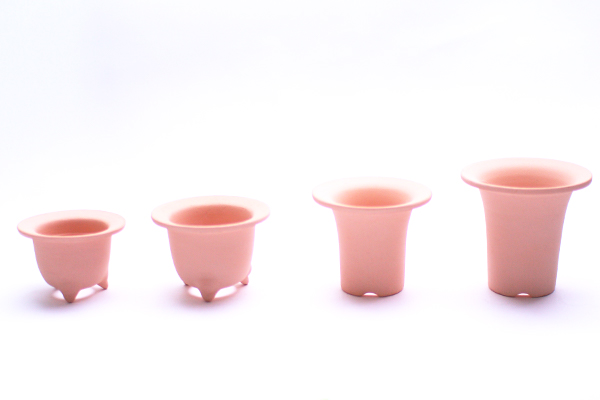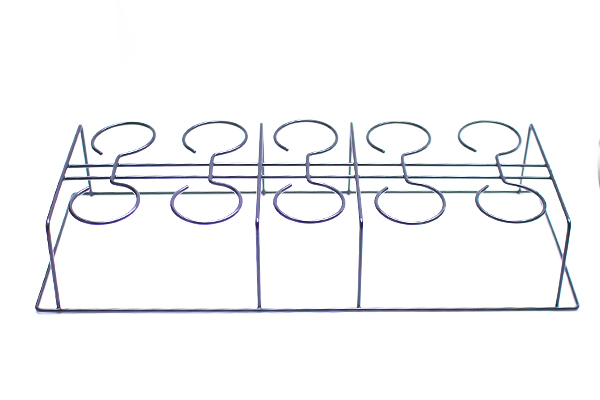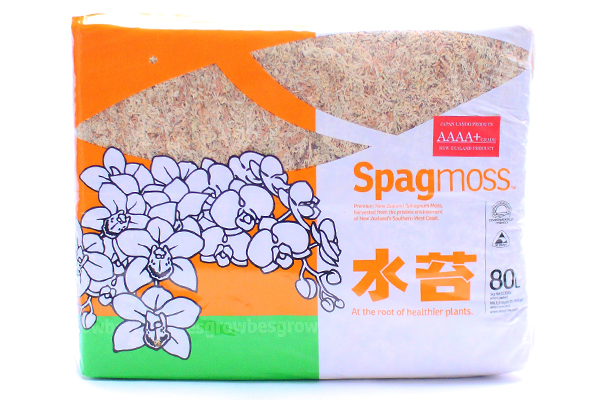富貴蘭について
F530 大江丸縞(n214)¥40,000
F529 黄金兜丸(n213)¥35,000
F528 匂威(n192)¥16,000
F527 黒豹(n190)¥11,000
富貴蘭の歴史 文献:日本富貴蘭会会報誌より
富貴蘭は日本の関東以西、低山地帯の樹林に自生している着生蘭で、一属一種の風蘭(ネオフ・ファルカータ)の種々に変化した園芸種の雅名です。歴史は古く、遠く江戸時代徳川十一代将軍家斉公が熱心な愛好者だったといわれ、日本全国の大名小名は競って領国内に自生する風蘭の中から変わったものを探し出して将軍に献上するなど、各大名も富貴蘭の愛培に力を注ぎました。
江戸場内での富貴蘭は金銀の網で覆われ、息のかからないように口に懐紙をあてて鑑賞しました。また、参勤交代の時は籠の中に吊るして花や香りを楽しんだといいます。このように古典園芸の雄としての歴史を持つ富貴蘭は昭和62年に開催された「第12回世界蘭会議」のシンボルマークに、日本を代表する野生蘭として風蘭の花が選ばれました。
平成2年に開催された花の万博での展示以来、各地の国際蘭展等に出品展示されたことにより、富貴蘭は古典園芸植物の世界だけでなく一般の方にも大きく注目されるようになりました。また、専門家による希少品としての高値取引から、栽培技術も進み品種、株数も増えたことから一般の方々に購入愛培できる今日となりました。
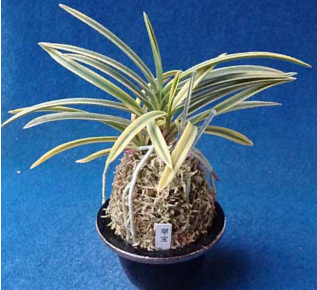
History of Fūkiran Reference: Japan Fūkiran Society journal
Fūkiran, being epiphytic orchids, grow naturally on trees in low mountains in the west of the Kanto region of Japan. Fūkiran is the Japanese elegant name for the cultivated variety of Neofinetia falcata, being of a genus with only one species. The cultivation of Fūkiran has a long history, originating in the Edo period. Tokugawa Ienari, the eleventh shōgun (military director) of the Tokugawa shogunate was believed to be a Fūkiran enthusiast, and the daimyō (federal lords) from all over Japan competed to search their domains for the rare varieties and offer them to the shōgun. The daimyō themselves also put so much effort in growing Fūkiran.
Fūkiran inside the Edo castle were covered by a gold or silver net, and people had to cover their mouths with Kaishi (a thin paper usually used for Japanese tea ceremony) in order not to breathe on the flowers while they appreciated them. It is also said that the daimyō often enjoyed the fragrance of Fūkiran hanging in their palanquins on their way to Edo.
The flower of Fūkiran, having a long history with Japanese traditional gardening, was chosen as the symbol to represent Japanese wild orchids at the 12th World Orchid Conference held in 1987. Since the International Garden and Greenery Exposition, 1990, Fūkiran have been exhibited at many international orchid shows and recognized widely among traditional gardening enthusiasts and the public. Fūkiran, being of such high value, used to be dealt with a high price among specialists, but now that many new kinds are produced because of advanced cultivation techniques, Fūkiran are available to the public.
富貴蘭の特徴
着生蘭であるということ、葉姿は小型で端正で美しく土は使わず水苔で植えるので軽く、乾燥にも強く、ベランダ、縁側、窓際など狭いところでのコレクションも十分楽しめます。 一般に蘭と言えば花なのですが、見どころも多く、葉や根などの個性的な変化を楽しめます。
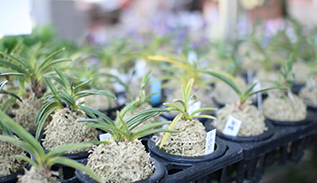
Characteristics of Fūkiran
Fukiran, being epiphytic orchids, are light (they are mounted on sphagnum moss not planted in soil), strong against dryness and unique because of their compact and shapely leaves. You can appreciate your collection of Fūkiran even at small places like a balcony, porch, and window. Speaking of orchids, we usually think of their big petals, but Fūkiran have a distinct fascination from other orchids and also provide years of enjoyment as their leaves and roots uniquely change over time.
富貴蘭の変化のバリーエーション
1葉の形の変化
- 葉幅が広く短くなった豆葉
- 針のようになった針葉
- 曲がりくねった獅子葉
- 熨斗葉(のしば)
- 艶葉(つやば)
- 姫葉等々
2葉の斑柄(模様)の変化
- 覆輪(ふくりん)
- 縞
- 虎斑(とらふ)
- 中斑
- 星斑などたくさんの変化あり
3春から空中に伸びる新根の色
- 青
- 赤
- 茶
- 白
- ルビー色など
4花の変化
富貴蘭のおすすめの楽しみ方
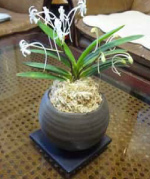
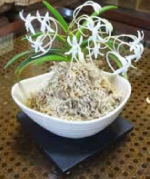
風みどりの富貴蘭の育成温室
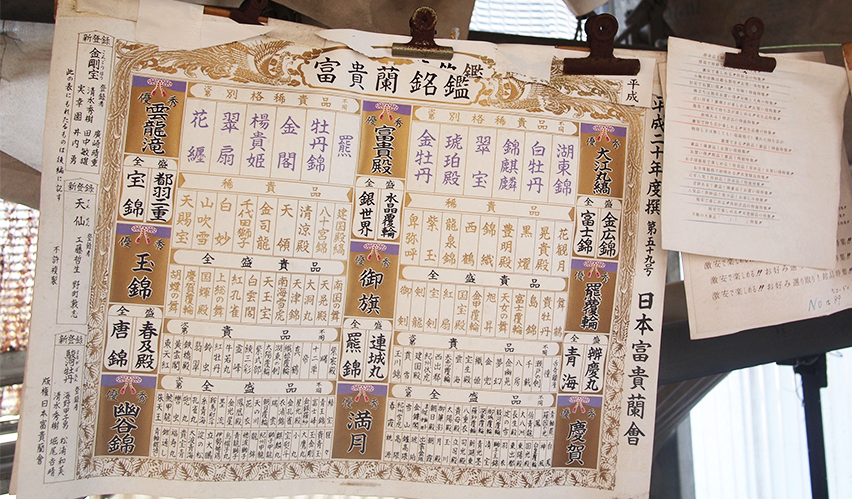
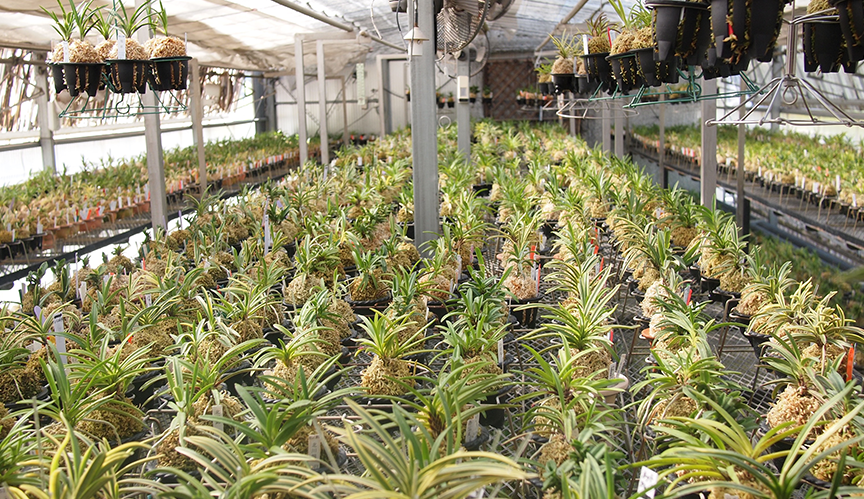
富貴蘭取り扱い40年の実績! 10,000円以上のお買い上げで送料無料! 風みどりの富貴蘭のお取り寄せをぜひご利用ください。
富貴蘭Net販売コーナーは、岡部園芸のオヤジさん岡部信寛監修のもと作成、販売しております!ご注文ありがとうございます。 昭和61年末から始めた「富貴蘭の通信販売専門カタログ・四季の特選リスト」も、おかげさまで27年目。 一年間のリスト送料1,000円(切手)でお送りします。 また、年間一鉢でもお買い求めの方には、翌年一年間無料送付いたします。

| 春の特選リスト | 3月上~4月初旬郵送予定 |
| 夏の特選リスト | 5月下旬~6月上旬郵送予定 |
| 秋の特選リスト | 8月下旬~9月上旬郵送予定 |
| 謝恩特価リスト | 10月下旬~11月上旬郵送予定 |
| 冬の特選リスト | 1月中旬〜郵送予定 |
お申込方法


